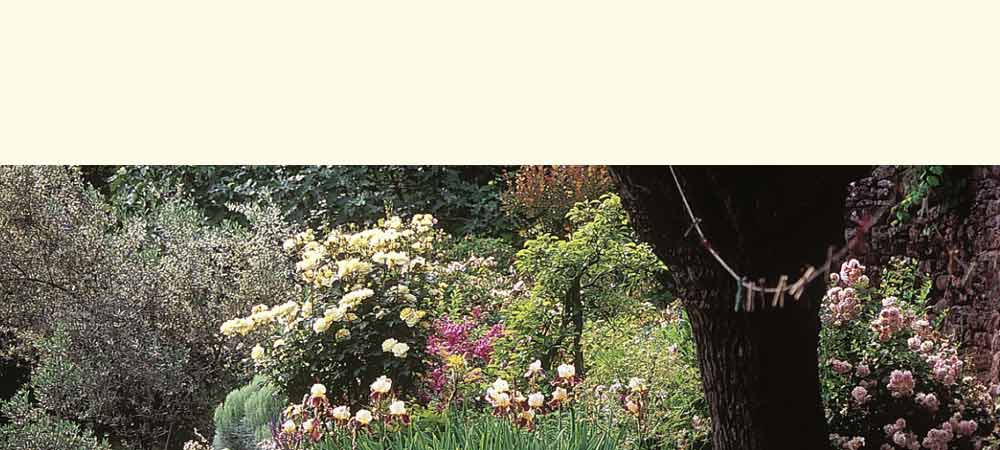- Agenda (3)
- Découvertes (3)
- Ma campagne (1)
- Notes méditerranéennes (2)

ARTS PAYSAGERS DE MEDITERRANEE
Louisa Jones's blog
Versailles and the Villa d'Este
Serendipity, my guide in many things, took me in May to the Villa d’Este near Rome and just a few weeks later, to Versailles near Paris. Both palaces and their parks have been extremely influential in the history of European garden design. The first (sixteenth century) epitomizes the Roman Renaissance, the second (seventeenth century) imposed the kind of French classicism still called (erroneously) the “jardin à la française”.
Rome and Venice
In early May 2012, I presented my new book Mediterranean Landscape Design (Thames and Hudson) in Rome and Venice to members of two Italian garden clubs : the Giardini aperti (www.giardiniaperti.it) and the Garden Club of Venice, baptized the Wigwam club in the 1970s by ecologist founders who admired Native American attitudes to nature (www.giardini-venezia.it/). My fairy godmother for the whole week was Italian garden journalist Ida Tonini, born in Venice but now living in Rome. She had already helped me in the preparation of this book, especially for the chapter on Venice. I often felt like Lewis Carroll’s Alice, zigzagging my way from event to event, feeling sometimes very big and sometimes very small, never knowing what would happen next, but confident it would always be something marvellous. There was a spirit of Romantic comedy throughout—beauty enhanced by shared laughter.
Cats in Garden Ecology
A Spirited Defense of Cats as printed in the letter column of the Mediterranean Garden Journal:
A reader quotes the Los Angeles Times: “Cats are not a natural part of the ecosystem.” Many people believe this, I know. But everything alive is “a natural part of the ecosystem, including me and the letter writer. Whichever of the current theories of evolution you accept, we are all in this together. The evolutionary role of cats is to live in symbiosis with Homo sapiens . Painstaking human breeding has made cats the hunters that they are today.
Les chats et les jardins de campagne
Aujourd’hui, une faune diverse est accueillie dans nos jardins moins chimiques qu’il y a dix ou vingt ans : insectes, poissons, reptiles, chauve-souris, chiens… et chats. Les jardiniers écologistes doivent-il admettre ces redoutables chasseurs ? C’est ainsi que l’homme, depuis des millénaires, a sélectionné le chat, pour la protection de nos semences, nos récoltes, nos cuisines, nos jardins…
What exactly is a "bastide" or a "mas" in Provence?
The word bastide evokes a country house in Provence. This word is a commercial siren song in Provence today, but what does it really mean? Thirteenth century manuscripts used it to describe fortifications, but by the seventeeth and eighteenth centuries, it had come to mean an elegant estate. Specialist Nerte Dautier compares the Provençal bastide to the Tuscan villa, both being « “a kind of rural habitat which combines an aristocratic or middle-class residence with a working farm and gardens.”
Qu'est qu'un bastide? qu'est-ce qu'un mas?
Bastide », ce mot sirène que l’on retrouve partout aujourd’hui. Mais qu’est-ce qu’une bastide ? Demandons aux experts. : l’historien Noël Coulet découvre ce mot en Provence au XIIIe siècle, confondu un temps avec « castra » et « turris » qui tous désignent une fortification. Toujours au XIIIe siècle mais dans le Sud-ouest uniquement, ce mot évoque ces « villes neuves » établies par le roi de France dont certains existent encore. L’usage en Provence évolua autrement pour désigner, d’après la spécialiste Nerte Dautier, un « type d’habitat rural qui associe résidence aristocratique ou bourgeoise, exploitation agricole et jardins ».
2012 Agenda de Louisa Jones de juin à novembre
Conférences, causeries et signatures:
1-3 juin: participation à manifestation Lire au jardin à Versailles
30 juin: signatures le matin à Uzès, l'après-midi à Alès
16 septembre: causerie+signature au jardin des Sambucs
6 octobre: conférence à la fête Gondwana, au domaine du Rayol
30 octobre: conférence à Barcelone dans un cycle sur les jardins méditerranéens
Sparoza, a founding Mediterranean garden
There is a debate currently among members of the Mediterranean Garden Society about Sparoza, an innovative garden near Athens, dating from the 1960s, where the society was born and which it still contributes to maintaining. Its custodian, Sally Razelou, was the MGS’s first president. For various reasons including Sally’s inevitable aging, the future of this garden is in doubt. I was asked to explain why I think this historic garden is really important for an association like the MGS, with its worldwide membership and growing international interest. Here is what I wrote:
SPAROZA jardin fondateur
Il existe actuellement au sein de la Mediterranean Garden Society, société que j’admire beaucoup, un débat qui concerne Sparoza, le jardin des années 1960 près d’Athènes. Ce fut le lieu de naissance de la MGS en 1994, et elle en assure encore la gestion. La conservatrice actuelle, Sally Razelou, fut la première présidente de la MGS. Pour diverses raisons, y compris l’inévitable avancée en âge de cette fine jardinière, l’avenir de Sparoza est l'objet d'une controverse. Les administrateurs de la MGS m’ont demandé d’écrire un petit texte pour expliquer la valeur que j’attribue à ce jardin fondateur pour une association comme la MGS, qui devient chaque année plus internationale et attire des membres sur tous les continents. Voici ma réponse :